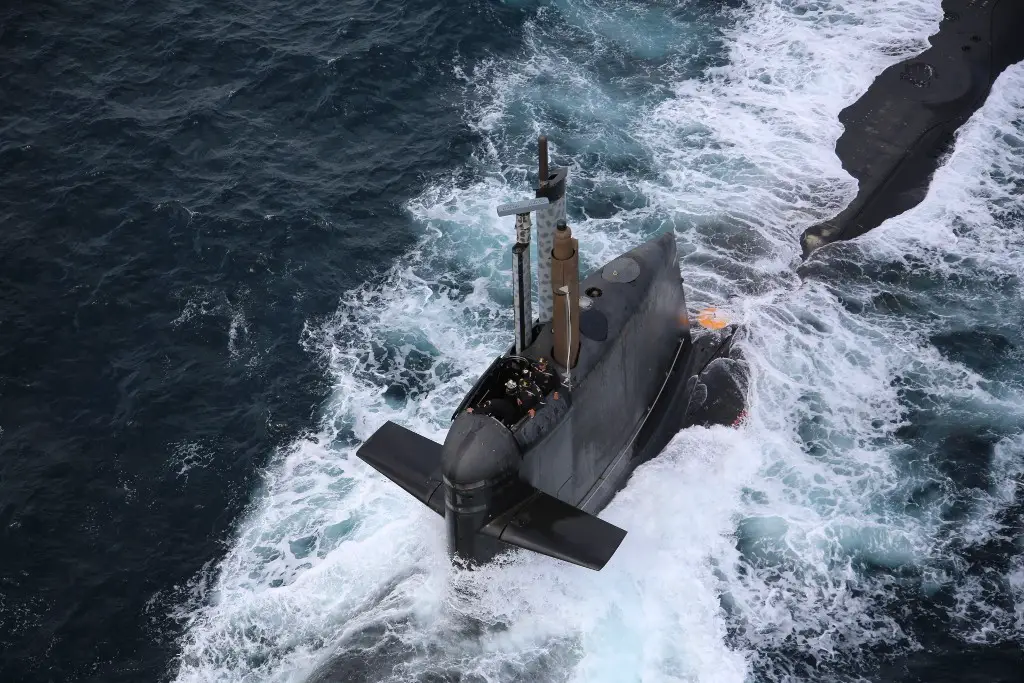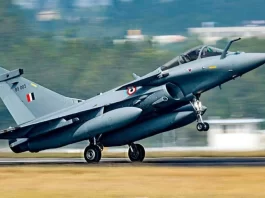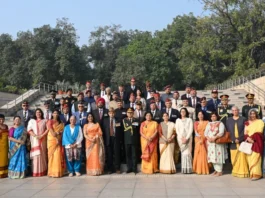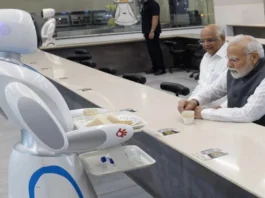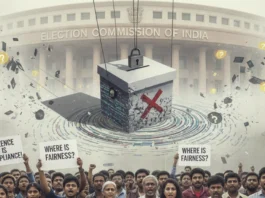Indian Navy P-75 1 submarine project (Project – 75 (l) or P 75 (l)) is a part of Phase I of the 30 Year indigenous submarine building plan approved by the Cabinet Committee on Security on 13 Jul 1999. As per the Plan, 24 submarines were to be constructed indigenously in concert with the Indian industry, public and private, of an appropriate design in two phases. Phase I was to be from 2000 – 2015 and comprised of two parts viz; Project 75 under which six submarines of a Western-oriented design such as Type 209 or a similar derivative thereof, were to be constructed at Mazagon Dock Ltd, Mumbai (MDL). Simultaneously, under Project 75(I), Six submarines of an Eastern oriented design such as 877EKM or a derivative thereof like Amur 1650 (Russia) were to be constructed at a second construction line to be identified.
Both the Projects were to be progressed simultaneously so as to complete the building of 12 submarines in the Phase I. Building of 12 submarines of purely indigenous design, incorporating the best features of both the design in Phase I, were to be constructed in Phase II (2016-2030). It was consciously decided to have two diverse sources of design to obviate any sanctions that could accrue in future due to political and strategic considerations.
Accordingly, negotiations were progressed with the French for their Scorpene design submarines during the period Nov 1999-‐Feb 2002 and technical & commercial proposals had been discussed and concluded by 06 Feb 2002. A formal contract was signed on 05 Oct 2005, with M/S Thales later incorporated into DCNS for construction of six submarines of Scorpene design, modified to specific Indian conditions, with complete transfer of technology (Design & Build). MDL was the Prime Contractor and Thales the Prime collaborator. The transfer also included Exocet missiles and the Subtics Combat system. The programme is ongoing and the first two submarines viz; INS Kalvari and INS Khanderi have already been inducted into the Indian Navy. The Third boat, to be named Karanj is undergoing constructor’s sea trials and is likely to be commissioned in the summer of this year. The rest three to follow are likely to be delivered to the Navy at an interval of nine months. Thus, by the autumn of 2022, all six submarines will have been delivered to the Navy, nearly five years adrift of the planned scheduled.
As stated above, the negotiations for the design to be acquired under this Project, which was to be of Eastern origin (Russia) were progressed with M/S Rosoboronexport (ROE) for their offer of Amur 1650 design Submarines in parallel with the negotiations of the Scorpene design under P 75. These negotiations, which were focused on design specifications suitably modified for Indian conditions, Transfer of Technology (Design and Build) had been completed by Dec 2001 with both the potential contending yards viz; MDL and Larsen & Toubro (with their facilities at Hazira) participating in the discussions.
Request for Proposal (RFP). A formal RFP was prepared to be sent to ROE and an internal NHQ committee’s report recommending a suitable yard for the construction of the six boats had also been prepared. However, before the process could be further progressed, the change of Government at the Centre consequent to the general elections of May 2004, probably caused a freeze of the Project till evaluation could be undertaken afresh by the new government at the Centre.
Role of Submarines under Project 75(I). These submarine’s primary role was to have a land attack capability with submarine-launched cruise missiles. In the early part of the present century, only two countries had this capability viz; USA (Tomahawk) and Russia (3M-14E Klub). The induction of the 3m-14E Klub land attack missile had been progressed for fitment on in-service Kilo-class 877EKM submarines after a contract for the same was concluded in 2003 for modernization of INS Sindhughosh. It was hoped that with the construction of Amur 1650 submarines, capable of launching 3m-14E Klub missile, the absorption of the weapon system and its combat exploitation would have been complete.
Introduction of Air Independent Propulsion System in QRs for P 75(I). Sometime in 2006-07, the Naval Qualitative Staff Requirements (NSQRs) were amended to include an Air Independent Propulsion System (AIPS) preferably of fuel cell technology. At that contemporary period, only the Germans had this technology.
Stalled Issue of RFP. Consequently, with the availability of a land attack missile only with Russia and an AIPS only from Germany, a formulation of an RFP, with an even playing field, could not be arrived at and issued, even to-date. However, it is pertinent to mention here that the CCS approval of the 30 Year Plan had envisaged an Eastern oriented design for boats under P 75(I) and it is not understood as to how a deviation was made to include Western-oriented design such as Type 214 with AIPS. This could have been done if the CCS approval had been amended by a fresh sanction.
Changed circumstances and Environment. There is no doubt that the circumstances and the environment have changed since the CCS approval of Jul 1999. This would merit a reconsideration of the factors affecting Indian Navy P-75 I submarine project, which would include an upgraded design to meet the strategic and tactical requirements of a platform that is expected to be in service well into the middle of this century. This seems to have been done. One major consequence of this has been the amendment to the Phase II of the 30 Year plan wherein from 12 submarines of purely indigenous design, the number has been reduced to six and the balance six have been re-appropriated for the indigenous construction of six SSN (Nuclear powered attack) submarines, approval of CCS for which was given in the latter half of 2018. As a result, the total number of submarines to be built under the 30 Year plan stands at 18.
Strategic Partner Initiative (SPI). The second consequence of the delay in P 75 (I) is the introduction of the SP from the private sector to encourage their participation in the ‘Make in India’ policy. After much fulminations and deliberations lasting nearly four years, only recently the Defence Acquisition Council (DAC) has shortlisted two potential builders as Strategic Partners for P 75 (I) viz; MDL and L&T. Thus, we have come a full circle from 2002-03, when too, only these two were in contention.
Potential Design Collaborators. As is known, five potential design collaborators have been shortlisted viz; The French Naval Group for enhanced Scorpene, Rosoboronexport for Amur, Thyssenkrupp, Germany for their Type 214/218, Spanish Navantia for their S 80, and DSMC from South Korea. As envisaged, the two shortlisted SPs viz; MDL and L & T each are to hold discussions with the five shortlisted collaborators and put up their best offer to the NHQ/MOD. Although this sounds reasonable on paper, it is extremely problematic in practice. Questions arise as follows:-
a) How does a yard select the kind of design technology for the submarine building to be inducted into the Indian Navy?
b) Is it in the mandate of the yard? It would be useful to recall here that during the construction of two Type 150 (Derivative of Type 209) in collaboration with HDW of Germany at MDL during the mid-1980s and early 1990s, the Navy had expectation from MDL that it would indigenise much of the platform equipment and systems, which it could not, as it was just not in the ambit of MDL’s charter or capability. Eventually, the Navy had to carry out this activity.
c) The yard does not have the competence to evaluate a proposal from the collaborator for the transfer of technology (Design & Build). This is purely the function of the user, who has institutionalized structures to undertake such an evaluation. The user cannot and must not abdicate his responsibility in this vital aspect.
d) How does the yard ensure the secrecy of information whilst talking to five different collaborators at the same time? This is a Pandora’s box with no key insight. To formulate a comparative forced decision matrix (FDM) for five different collaborators by the yard is simply going to be a nightmare Even if the yard is given some guidelines, it simply does not have the varied pool of expertise and competence as is available in the NHQ.
e) The job of the yard is to implement the contract, for the construction of the submarine, entered int between the user and him on one part and between the user and the collaborator on the other par This is exactly how it had been done in the case of the P75 for construction of the Scorpene submarines.
Creation of Infrastructure. The shortlisted SPs will need to create specific to type infrastructure at their premises. L&T has been working with Rubin Design bureau from Russia for the last three decades in a special project. The MDL has working experience with the Germans (in the 1980s and 1990s), French (ongoing) and the Russians (ongoing for surface ships). Further, MDL is in a position to work two assembly lines for submarine construction viz; East Yard and the Alcock Yard. Therefore, does it not give both the French and the Russians a sort of a headstart in the competition? What prevents MDL and L&T to follow the path of least resistance whilst talking the five potential collaborators? These questions brook answers and re-emphasize the User’s (Indian Navy) responsibility in selecting the collaborator and not to outsource this task to the SP.
MDL has adequate expertise, capacity and infrastructure in its premises for the submarine building of even two designs simultaneously. It has nearly completed its charter under P 75 and by end 2022 will be out of orders having delivered the last of the scorpene submarine. If it is not loaded further, how is it to amortise the sunk costs for creation of the infrastructure and remain economically viable? The basic premise for a strategic partnership initiative is to ensure that the SP becomes a long-term partner in the realisation of a Project and therefore investments made in execution of the same are recovered in the long run and by ensuring a full order book for him. If a competitive bid is required at each stage, the SPI loses its meaning and is rendered infructuous.
The Requirement of AIPS. Although, not in the first leg of the NSQRs for P 75(I), the requirement for AIPS was included in 2006-07. There are certain factors that need consideration as regards the utility o an AIPS. These are as follows: ‐
a) Endurance. Despite claims by vendors, an AIP can give an extended submerged endurance of 8-‐9 days at creep speeds of 2-‐3 knots. These speeds do not provide a submarine with the mobility required for manoeuvers during an attack and subsequent evasive getaway, wherein speed bursts in the range of 8-‐10 knots would be needed, thereby forcing usage of onboard main battery groups. Once the main batteries have been used, charging them at periscope depth (PD) under snort becomes necessary. To reduce this exposure at the PD, the need is a high capacity main battery and a powerful generator, which can pump in very high amperage into the battery.
b) Specialised Infrastructure. Fuel cell-based AIPS require specialized infrastructure ashore which require considerable investment.
c) Standoff range weapons. With the P 75(I) slated to have a stand off range anti-‐ship and land-attack cruise missiles, one wonders as to what additional advantage does an AIPS render.
d) Lastly, it is worth mentioning that the concept of AIPS was developed by navies of Germany, Sweden and Japan. All of these are maritime self-defence forces and usually operate close to their shores.
e) DRDOs efforts in Developing AIPS. The DRDO has been engaged in developing an AIPS in collaboration with Thales from France using the diesel reform technology. These systems when proven will be retrofitted on Scorpene submarines in the form of a plug-in compartment. However, the pressure hull diameter of Scorpene boats is lesser than the boats envisaged in P 75(I) and hence would need scaling up, which by itself is a complex exercise. In any case, the AIPS under development by DRDO is many years away from being proven at sea on an in-‐service submarine and subsequent induction into the navy.
Long-range Anti Ship and Land Attack Missiles. The Primary role of the submarines to be built under P 75(I) is land attack capability. Presently, there are only two proven sources of land-attack missiles. USA (Tomahawk) and Russia (3m-‐14E kalibr). The French also claim to have proven their Scalp missile with a range of 1000km. However, the complete veracity of this claim is yet to be established. The South Koreans are also developing a submarine-launched land attack missile (Chonryong) with a range of 500 km. This is still in a trial stage and one cannot be sure as to when it would be operationally inducted, although an indicative date of 2025 is being spoken of. It, therefore, is apparent that the availability of long-range land-attack cruise missile is limited to one or best to two sources.
Way ahead.
Having had a look at the various factors which need consideration, the way ahead looks as follows:-‐
a) The SP model needs to be revisited given that MDL is soon to without orders for submarines once the last of the Scorpene submarine is delivered in 2022. Being a government-owned PSU, with a long time experience in submarine construction as also having adequate infrastructure for the same, it should be nominated as the Prime contractor for execution of the P 75(I). Not doing so would be repeating the mistake made in 1987 when the construction of the 5th and the 6th SSK (Type 1500 HDW) was stopped leading to an idle assembly line and loss of trained manpower.
b) The task of selecting the prime collaborator, for the transfer of technology (Design & Build) should be undertaken by the user (NHQ). He alone has the necessary wherewithal, and competence to do the same.
c) The requirement and characteristics of the land-attack cruise missile must be clearly enunciated in the RFP.
d) In view of the SSN construction programme carved out of Phase II of the 30 Year plan and other factors discussed herein on its utility, the necessity of AIPS needs a review. If it is decided to retain the same, the submarines should be constructed in a “Fitted for” configuration rather than “Fitted with”. Further, this capability should be of indigenous origin (DRDO) and retrofitted during suitable refit period.
e) The indigenous manufacture of maximum elements of the platform equipment and combat system should form an integral part of the negotiations with the prime collaborator.
f) The work on a purely indigenous design incorporating the best features of the Scorpene design in P 75 and the chosen design for P 75(I) for the Phase II should start at the earliest.
Conclusion
We have examined the background, the developments at various stages relating to the Indian Navy P-75 I submarine project from 2001 onwards. The Project has not yet seen the light of day despite the proposal and as approved by CCS in 1999, for it to have been completed by 2015. There have been various factors, which have led to the situation to come to such a pass, but the time has come to make amends. The 30 Year Plan was envisaged to create an indigenous capacity of building conventional submarines with an aim to gradually replace in-service submarines inducted in the 1980s and 1990s as and when they became due for retirement from service. The plan had also envisaged a stabilized force level of 24 conventional submarines by 2030. However, the same stands amended to 18 boats with six having been re-appropriated for the SSN building programme.
One of the main factors for the delay in progressing the implementation of the Project as approved in by CCS in 1999 was the inclusion of the requirement of an AIPS in the NSQRs in 2006-07. Further delay accrued due to the introduction of the SPI concept in the revised DPP of 2016. Whilst these have their own significance, the urgent need is to start the construction of the submarines to arrest the attrition rate of the in-service submarines, which directly impinges on the operational profile and capability of the submarine force. Some respite has been managed by executing the Medium refit and life certification (MRLC) of the submarines in service thereby giving them an additional lease of life by 10-12 years. This only provides an interim solution. The real long-term solution lies in the urgent implementation of the measures suggested in the ‘way ahead’ above to kick start the Indian Navy P-75 I submarine project.
